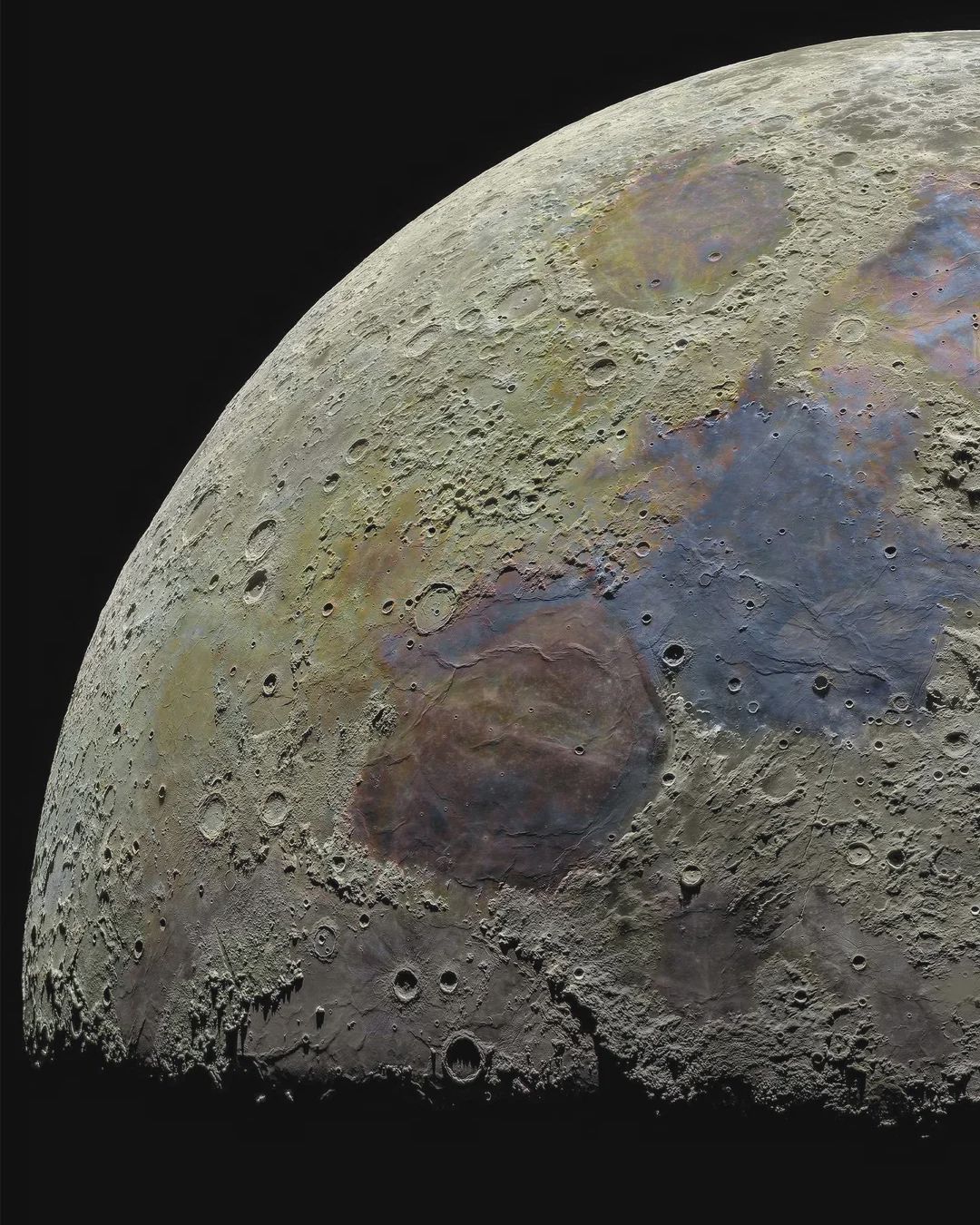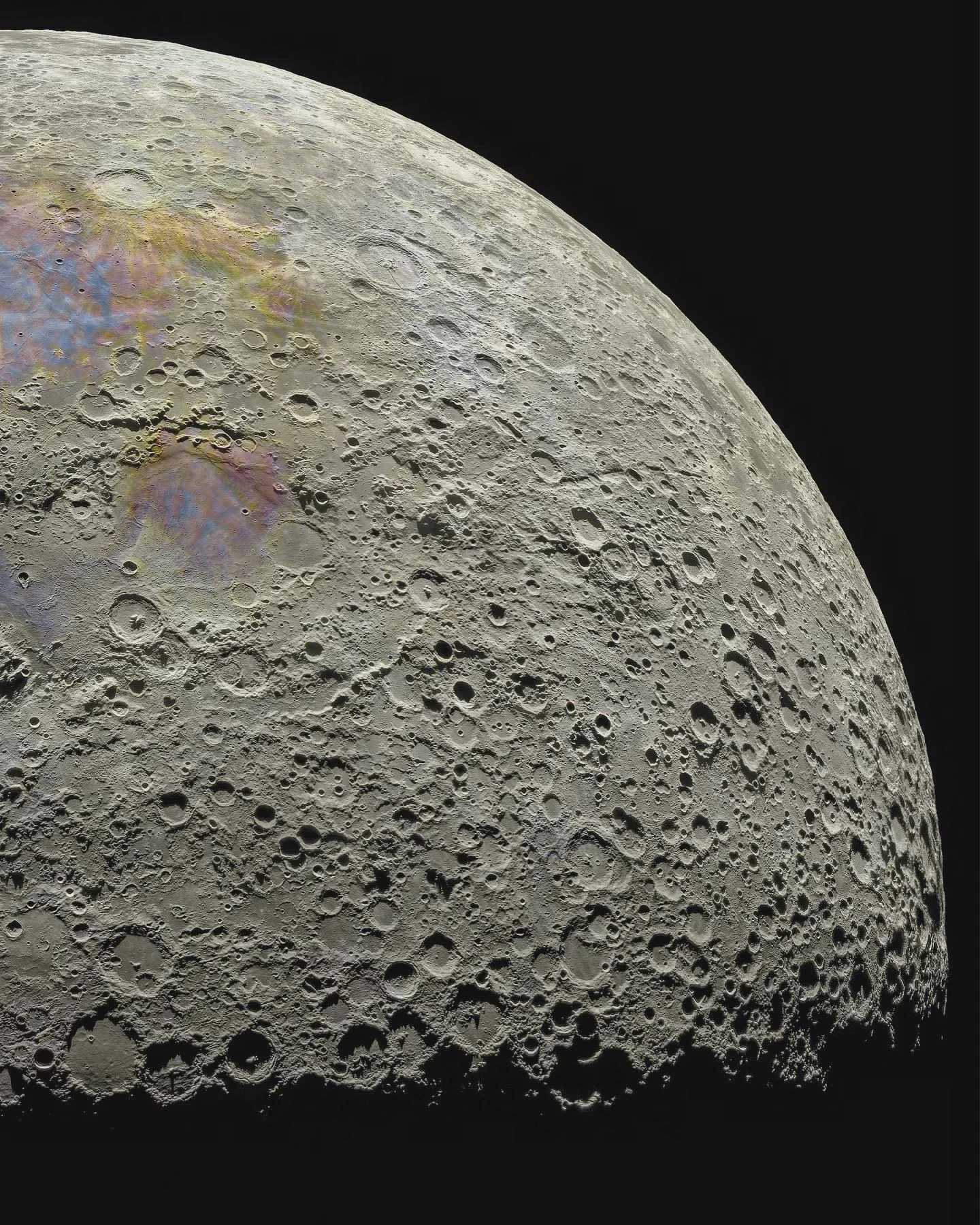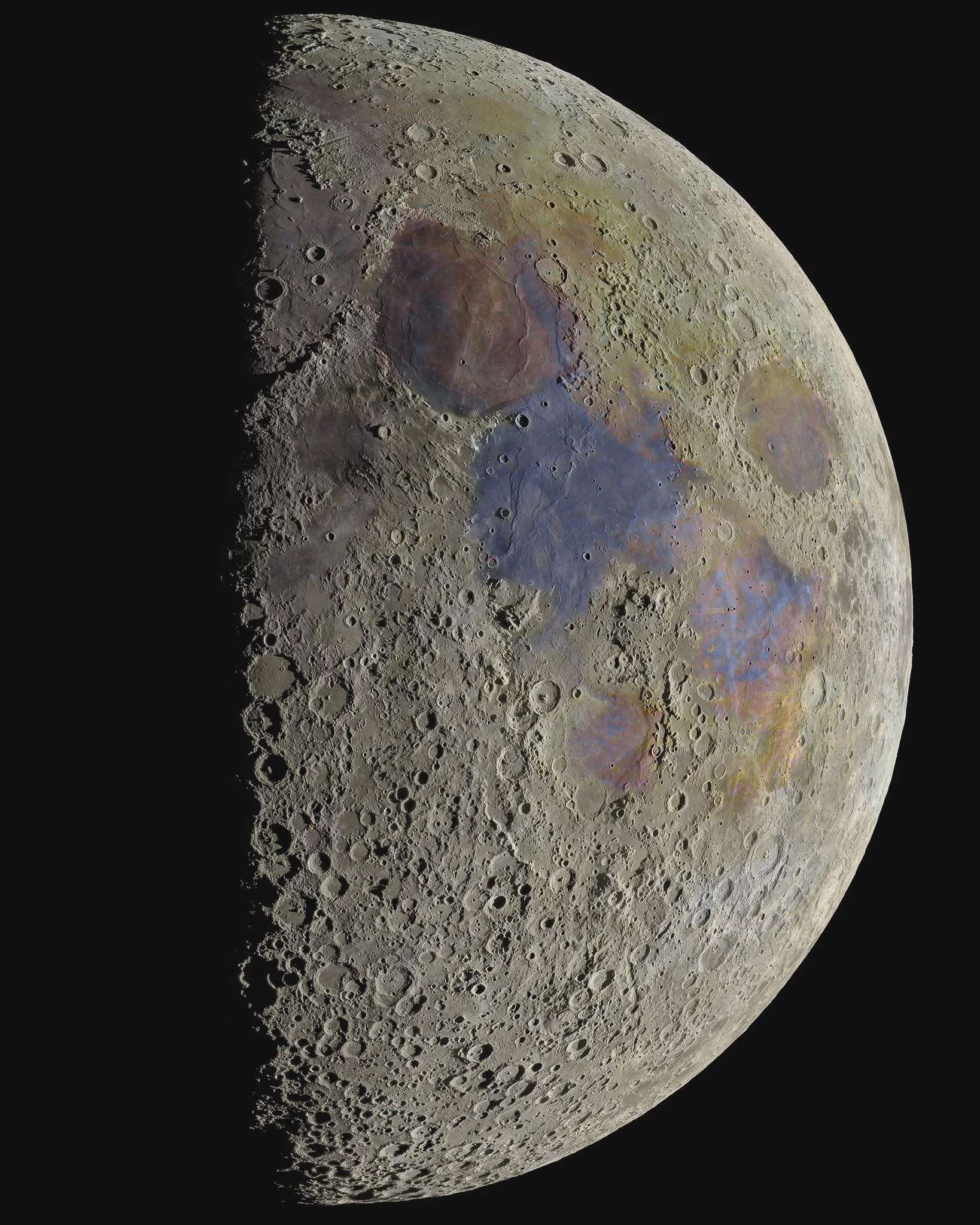OP: "This is my most advance moon photograph EVER it consist of 81000 images and over 708GB of data." (see comments.)
from fossilesque@mander.xyz to astronomy@mander.xyz on 23 Jun 2024 20:24
https://mander.xyz/post/14512329
from fossilesque@mander.xyz to astronomy@mander.xyz on 23 Jun 2024 20:24
https://mander.xyz/post/14512329
From the other place: reddit.com/…/this_is_my_most_advance_moon_photogr…
Pics too good to miss. :)




threaded - newest
this is the COOLEST thing ever
What is it with the blue/violet/red-yellow stuff?
Is this some metallic thing?
Knowing what I know, I am assuming this image was standardised and then normalised (fancy stats algos to keep things in the same visual range) while stitching it together, and the final product enhanced a lot of colouration (saturation). They’re subtle or undetectable to the naked eye, but they exist. They are reflected in the different minerals present. I’ve done this stuff (raster stitching) with different imagery. Op was active in the comments with info, but I didn’t read up on it.
Pasted from the Reddit thread:
Those are great explanations!
Yeah when you get into “proper” photography you quickly realize a “real” image is somewhat subjective. This moon is cracked to 1000%, though.
It’s true. I did photography as a hobby as a kid and it set me ahead when I started mapping. It’s all the same no matter the domain.
Excellent explanation. Appreciate you sharing it!
here’s what I’d like to know: would we perceive any of this pigmentation from the lunar surface?
It’s crazy to me that you can get this much detail even through our atmosphere.
This came up on my feed. I’m not into the hobby, but it’s a beautiful photograph
I imagine the yellowish tinted areas are mostly sulfur from volcanic ash emissions. That middle picture, in the section between the two mare, it looks like how beach sand is altered after being inundated with water. In general, most of the surface looks like pulverized sand on a beach, at a high level abstracted perspective view. That one section between the mare looks whetted by comparison. Perhaps ash altered the consistency enough to create a similar type of compacted appearance, but if there was water and vulcanism in the area, perhaps that was the Lunar version of Yellowstone.
Funny that the most recent research on the anomalous regions inside the Earth’s mantle have now been linked to the Theia collision through the mantle hotspot activity. So it is likely that the moon and Yellowstone are directly linked. It would be interesting to find that the regional anomalies on the moon are likewise of a similar origin. It would be interesting to me if Yellowstone’s doppelganger is right there in plain sight as well.
I don’t know anything about moon pictures, my best attempt was not great
<img alt="" src="https://lemmy.today/pictrs/image/dc85d2fb-df81-4245-bb2c-33d001571e43.jpeg">
But how did they composite 81,000 images without worrying about atmospheric lensing distorting the proportions as it moved across the sky for 4 days? Is it just negligible?
Good question.
Is that just the Samsung smart camera composite?
Huh? Nah it’s an old Canon 1300D. I had to hold the tripod still with sandbags while it took.
My comment was mostly sarcasm. theverge.com/…/samsung-fake-moon-photos-ai-galaxy…
Cool that you used a “real” camera to do it. Just the experience of doing that is satisfying even if the photos don’t come out great.
Then we appreciate the Nasa images more
The Samsung moon actually just makes up a plausible looking moon, which is hilarious given that the moon essentially doesn’t change, so they could have just overlayed reference images. Instead, you get features on the moon that don’t exist.
.
They didn’t. What they did was take 81,000 images and then filter through, them taking the best images of each region of the Moon and then averaging and compositing those.
It isn’t 81k images stitched together. It’s 81k images taken in the hopes of getting enough with perfect clarity to create the composite.
Thanks for sharing this!
@fossilesque beautiful!
Fuck that looks crisp
Can you see any moon landing site remains like the vehicles?
Not even Huble can see them. The moon is HUGE and the remains on the moon are tiny.
no but this is where the Apollo 11 site is <img alt="" src="https://i.imgur.com/ha5TUlK.jpeg">
This is absolutely gorgeous. I love photos like this :)
Linking to Reddit kind of defeats the purpose of using Lemmy.
At least they posted the source
Yes. However, we shouldn’t be sourcing content from Reddit at all.
I disagree. I welcome OC content like this.
I too welcome original content content
It’s not OC. If it was, OP wouldn’t have had to link to Reddit to share it.
Came in to see the comments and my goodness they are lovely this evening!
Quick! Someone tell Markiplier about this! (He hates the moon.)
With all the impacts the moon seems to take, is there any footage of a new crater being made? That would be super cool to see.
Here you go! First time seeing this footage myself!
youtu.be/000iTCoEE1s?si=mKO_1XCDVLYS-Yqk
I seem to recall a story about a large impact visible to Europe from Earth sometime around the renaissance as well, but I couldn’t find it.
Oh wow! Thanks for sharing!
This image does a good job at making me realize we have explored basically nothing on the moon. SO much more to explore, yet we act like there’s no point trying to send more astronauts to the moon for decades. Please, increase NASA budget more.
Irrespective of the crater size, depth looks consistent. Does anyone know why that is?
Multiple reasons:
Higher speed impacts penetrate deep, but also cause the rock to melt. This fills in deeper craters, limiting the max depth a crater can be. There are still very deep huge craters, but these look more like big depressions than craters, because of how big they are. They are also themselves covered with craters usually, making their size and shape harder to see.
Because the diameter of the moon is 3474km, a difference of several kilometers would only amount to a fraction of a percent. So even though one crater is for example 10km deeper than another, relative to the size of the moon this is practically nothing. When viewing pics like these where the whole moon is visible, this matters.
The moon is a very uniform gray color and lacks the indicators our brain use to gauge depth. This makes it very hard to guess how deep the different craters are. You can see some craters have more shadows where others don’t, but they are also different shapes and sizes and the lighting is different so it’s hard to see.
There is also probably some part of the speeds of incoming stuff being within a certain range and the moonrocks being relatively uniform in materials, so the range of craters than can exists is probably limited. But I’m not certain how big of an factor this is and what the range is.
I’m hoping there are missions to go in close, get a better look.
There are plenty of missions right now. China has landed a rover on the moon this month. And multiple countries have satellites in orbit around the moon. Nasa has their Lunar Reconnaissance Orbiter which takes very high resolution images of the moon all the time and these are publiced on their website.
The conspiracy about the moon is that under a thin layer of dust… it’s really all metal. /shrug
Wow. The level of writing failure in the headline is ALSO astronomical.
They take pictures of other balls floating around they don’t teach English give em a break
he missed two letters.
ASTRONOMICAL!!!
Wait a goddamned fucking minute that’s not cheese…!
It’s cheese, gromit!
It’s… beautiful.
Now, is it really those colors is that just science stuff like all those dope pictures of nebulas?
Poor thing looks bruised. Who hit you?!